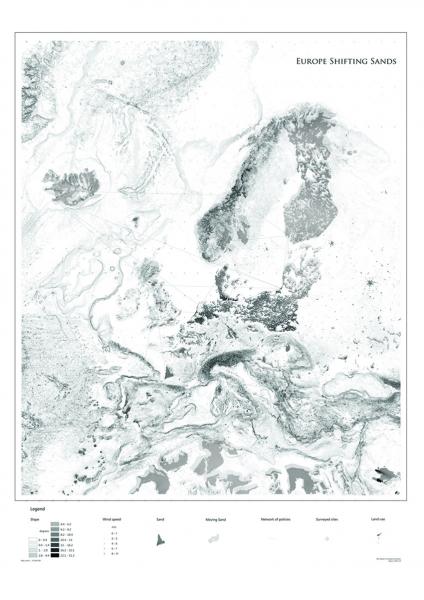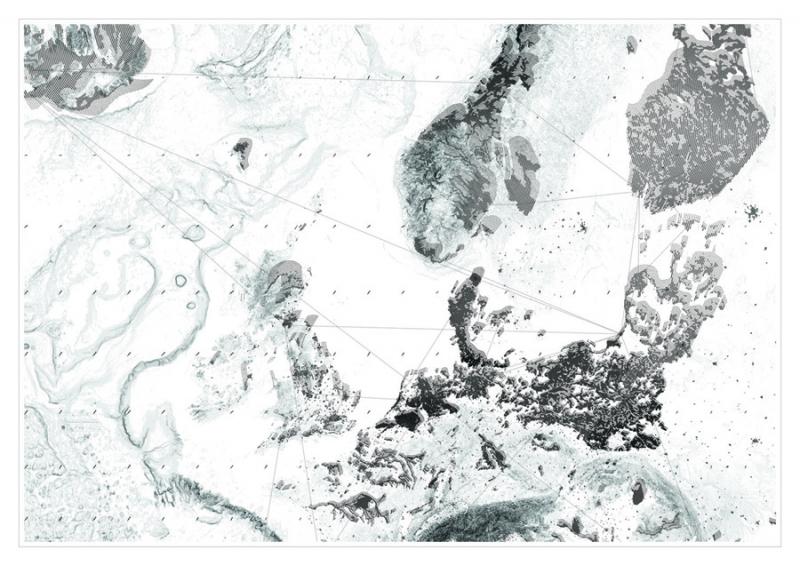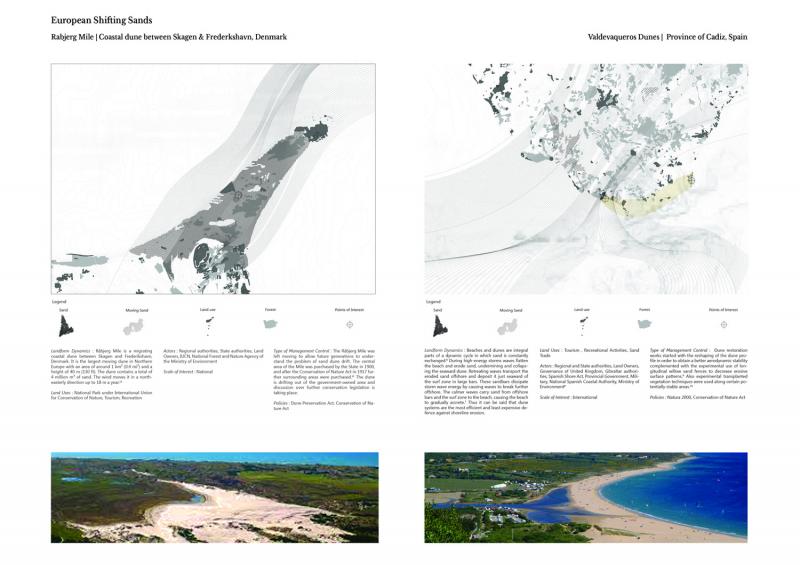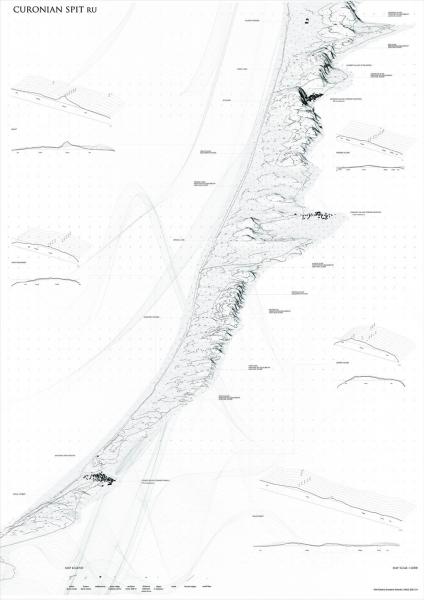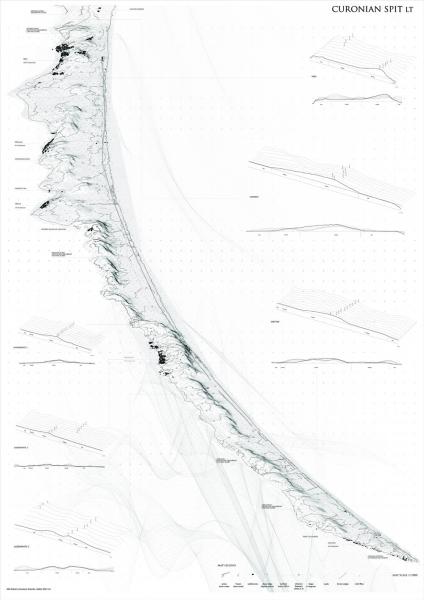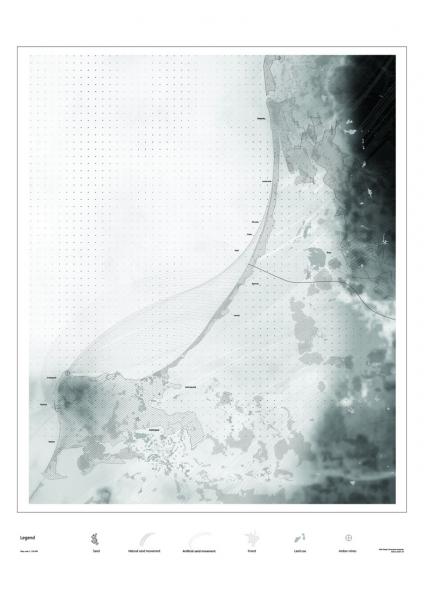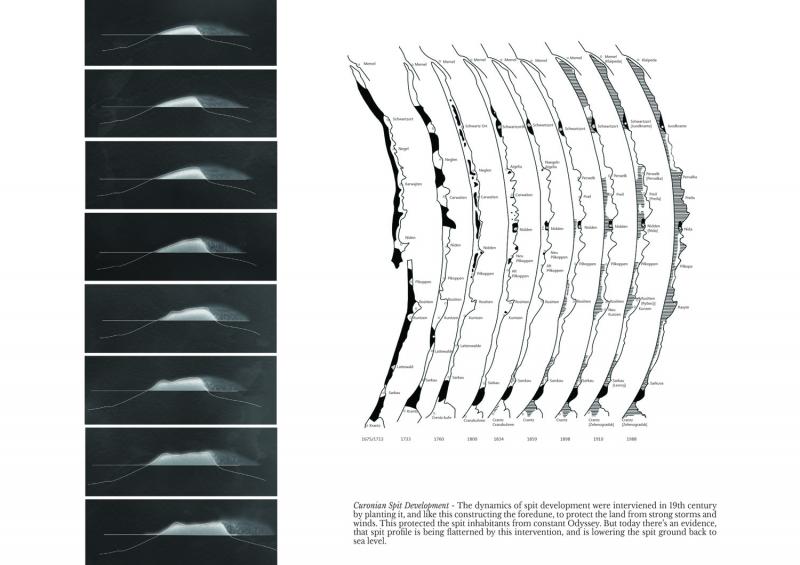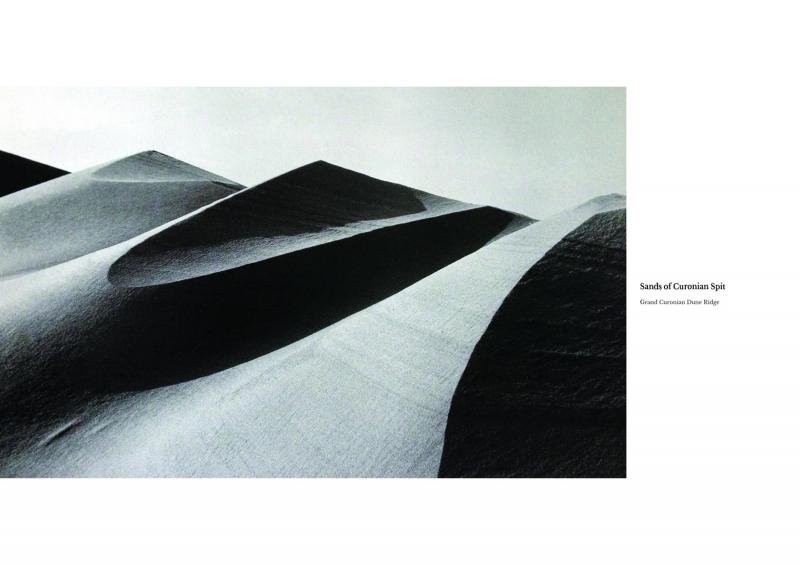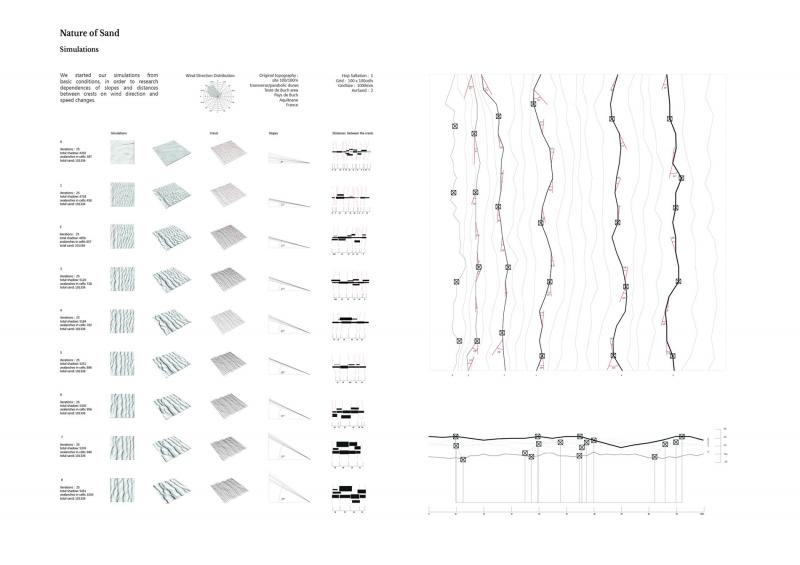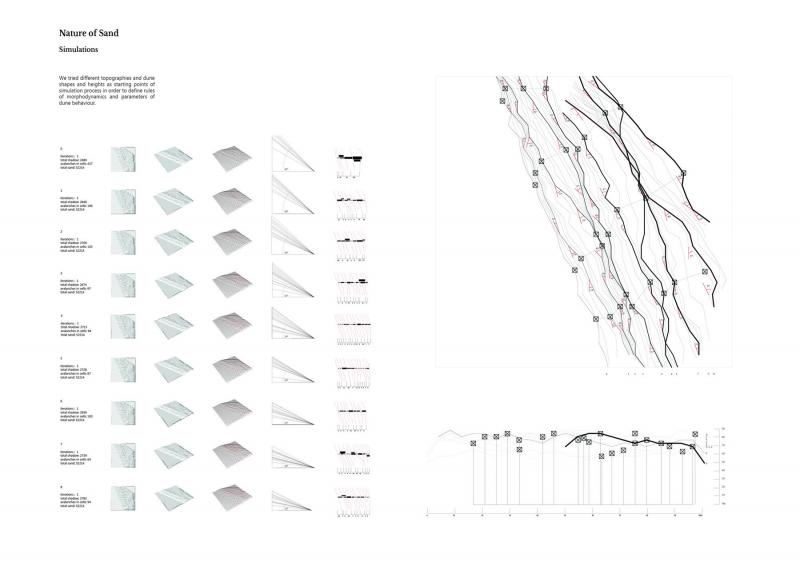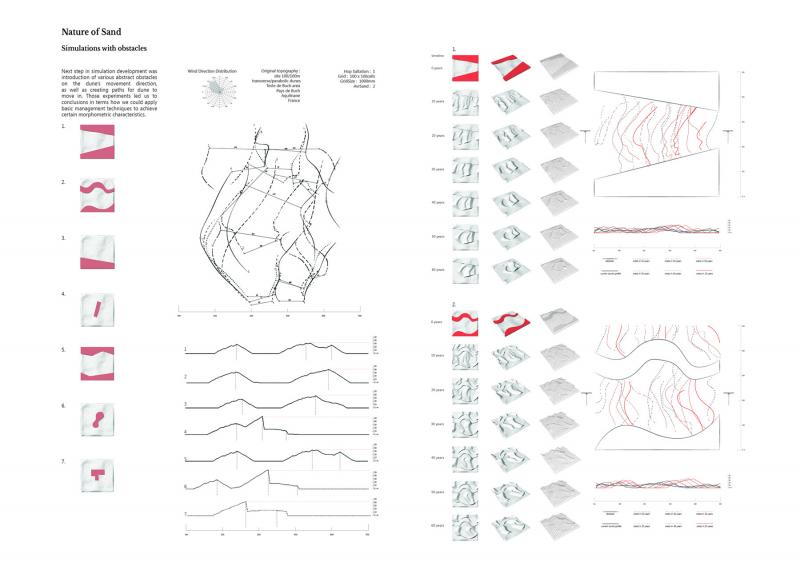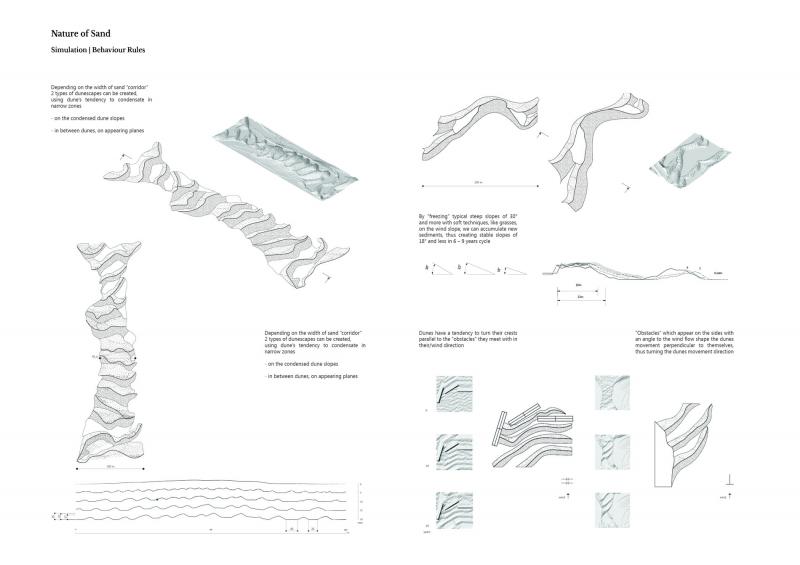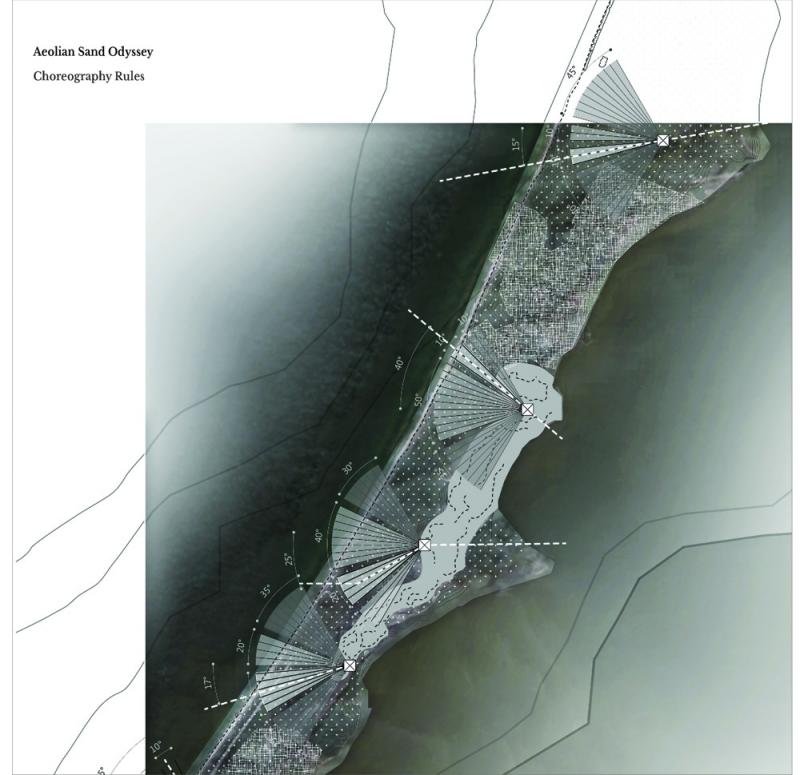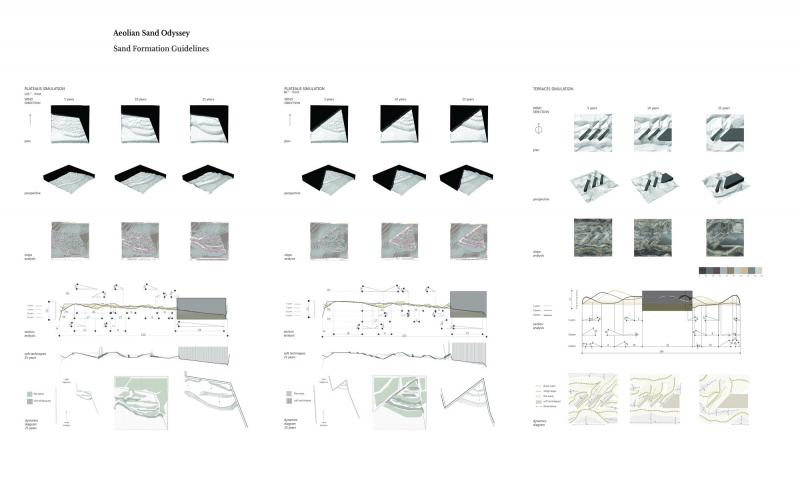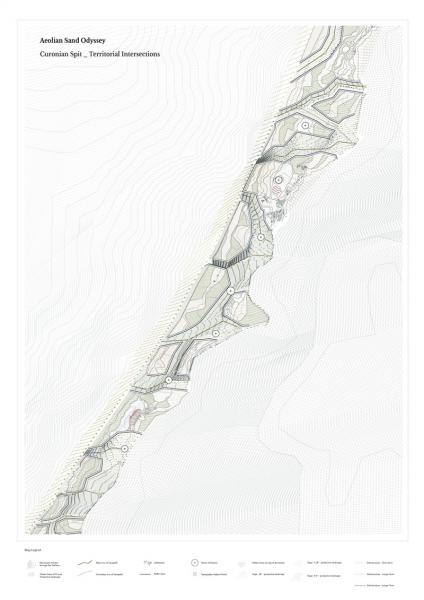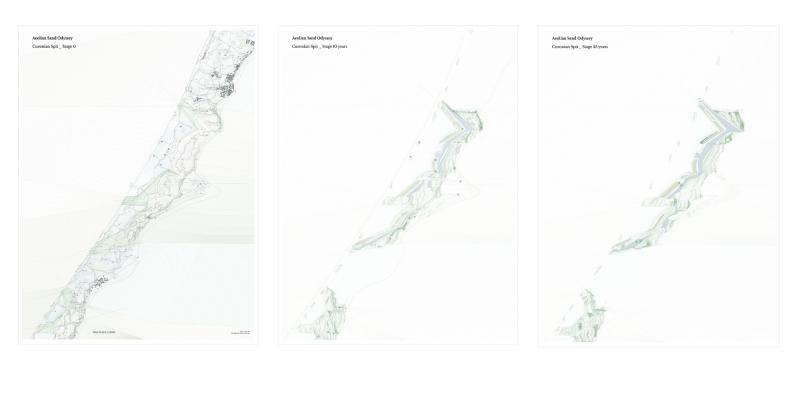AA Landscape Urbanism_Sandway Policies
In all European countries, attention is given to landscape preservation; however, policies and practices in the past have mainly been based on specific ecological and visual landscape qualities but not spatial and political elements of the territory. Although all countries are under an umbrella of the Pan-European policy, each region pursues its own agreements according to the diverse actors of the territory. In the end the decision is always made by a group of people who are brought together to work out the reorganization of the territorial forces and provoke not only the movement of the sand but also the territorial shifts, establishing in this way different degrees of control.

